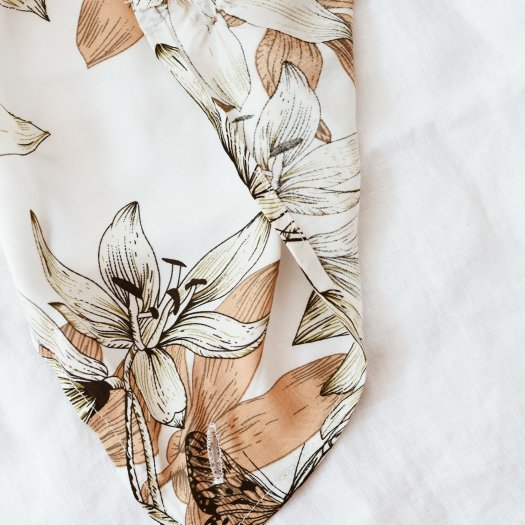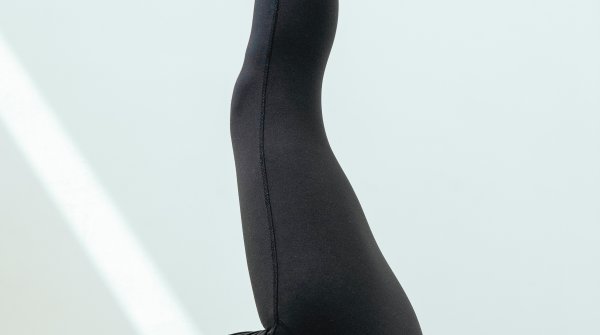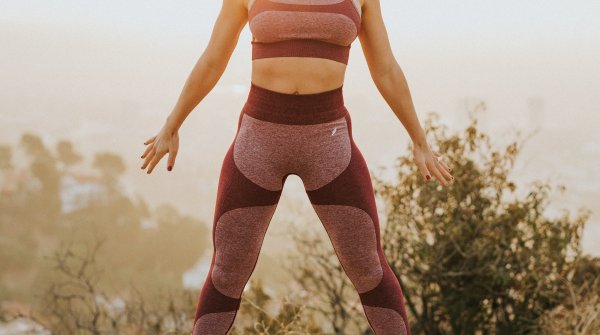You want to live more environmentally conscious and improve your carbon footprint not only through better nutrition and less consumption? Choosing the right clothing will help you do that! In our series "7 things you need to know about materials" we have all the important information about clothing materials and how sustainable they are. This will help you raise your awareness of sustainable clothing and do something good for the environment.
Viscose is a chemically produced fiber from the natural substance cellulose. Viscose is also known as "rayon" and is used in the fashion industry as artificial silk. Viscose is a versatile fabric that can be used to make a variety of clothing items, including dresses, blouses, and skirts.
Viscose fabric is known for its softness, breathability, and drape. It can also be dyed easily and is often used as a substitute for natural silk or cotton. It provides comfort when worn and gives a visual sheen to clothing. However, it is important to note that viscose fabric can shrink and lose its shape if it is not cared for properly, and it is not as durable as some other fabrics.
- Viscose is a semi-synthetic raw material
- Viscose fabric is so easy to care for and versatile
- Viscose absorbs moisture
- Viscose fabric is more skin-friendly than synthetic fibers
- Viscose is biodegradable
- Conventional viscose is not sustainable
- "Lyocell" or "Tencel" indicate a more environmentally friendly production from eucalyptus
Viscose is made from cellulose, a natural raw material found in wood. It is extracted from beech or spruce wood, eucalyptus or bamboo in a chemical process and then pressed into fiber form under high pressure. This process is the reason why we speak of a semi-synthetic raw material: viscose is neither a pure natural fiber such as cotton or silk, nor a synthetic fiber such as polyester.
The viscose process allows cellulose fibers to be modified in length, strength and stability. This adaptability not only makes viscose super versatile and the ideal partner in blended fabrics, but also ensures that it is much easier to care for than pure natural fibers: it is easier to wash, hardly needs ironing and does not rub off as quickly.
Because viscose is based on the natural raw material cellulose, it has similarly good climate-regulating properties to the natural fibers cotton or wool. It is very absorbent and can absorb up to 400 percent of its own weight in moisture. At the same time, the fabric does not appear wet, but has a cooling effect. An advantage over pure natural fibers: Viscose dries super fast and is therefore popular for travel towels, vegan sneakers or outdoor textiles.
No petroleum is used in the production of viscose, and cellulose cultivation mostly does without pesticides. This has a positive effect on the skin compatibility of the fibers: pure viscose contains hardly any harmful substances and is ideal for allergy sufferers.
The renewable raw material cellulose is used for the production of viscose. It is found in various woods and is still biodegradable unchanged after the viscose process. This means that viscose performs better in environmental terms than fully synthetic materials.
The viscose process is extremely energy-intensive. In addition, enormous chemical conversion processes are needed to obtain the cellulose. In liquid form or as toxic fumes, the chemicals cause considerable pollution in the manufacturing regions. The consequences are not only harmful to the environment, but also demonstrably endanger the health of people in and around the factories.
When buying viscose, there are several factors to consider: The starting raw material, the manufacturing, as well as the processing. In the case of the viscose type "Modal" for example, the cellulose is mainly obtained from sustainable forestry. The designations "Lyocell" or "Tencel" indicate a more environmentally friendly production from eucalyptus, in which no waste water containing harmful substances is released into the environment. Also produced without chemical additives is "Lenpur" viscose. The special feature: Not a single tree is felled for this material, because the cellulose is obtained exclusively from the pruning of trees.
Although viscose fiber is not as sustainable as it seems, it has advantages over other chemical fibers such as polyester when it comes to environmental friendliness. So the advantages of viscose are:
- More sustainable than most chemical fabrics
- Provides comfort when wearing clothes made with viscose
- Provides shine to clothing (visual effect)
- Breathable and cooling
- Moisture regulating
With regard to these advantages, the question of whether viscose is good can definitely be answered with a "yes".
Finally, we have summarized the most frequently asked questions about viscose.
Viscose is sustainable compared to many other fabrics, because it is made from recycled plant residues. However, the manufacturing process is harmful to the environment, because the production requires a lot of energy and chemical substances such as sulfuric acid are used, which are harmful to the environment.
The disadvantages of viscose are that the fabric is not suitable for the dryer and can shrink. In addition, viscose is prone to knot weave and has low tear strength.
Viscose is moisture-regulating and breathable. In addition, the man-made fibers are allergy friendly, which makes the fabric ideal for the production of clothing.
To determine whether viscose fabric is actually good or bad depends on the criteria you value. There are several points to consider.
Benefits of viscose fabric include:
- More sustainable than most chemical fabrics.
- Provides comfort when wearing clothes made with viscose.
- Provides shine to clothing (visual effect).
- Breathable and cooling.
- Moisture regulating.
But there are obviously also some drawbacks when it comes to viscose:
- The production of viscose fabric and viscose material CAN also be harmful to the environment.
- Viscose fabric can be less durable than some other fabrics. It's prone to pilling and wearn down.
- Viscose fabric can also shrink when washed. Especially when washed in hot water or machine-dried.
- The production process is often harmful to the environment.
In the end, whether viscose fabric is good or bad depends on the criteria and factors that you value the most. From a sustainability point of view Viscose fabric is definitely more sustainable compared to many other fabrics, because it is made from recycled plant residues. However, the manufacturing process often is harmful to the environment, because the production requires a lot of energy and chemical substances such as sulfuric acid are used, which are harmful to the environment.
 SustainabilityReady for the Green Deal? An Update for the Sports Industry
SustainabilityReady for the Green Deal? An Update for the Sports Industry
- Awards
- Mountain sports
- Bike
- Fitness
- Health
- ISPO Munich
- Running
- Brands
- Sustainability
- Olympia
- OutDoor
- Promotion
- Sports Business
- Textrends
- Triathlon
- Water sports
- Winter sports
- eSports
- SportsTech
- OutDoor by ISPO
- Heroes
- Transformation
- Sport Fashion
- Urban Culture
- Challenges of a CEO
- Trade fairs
- Sports
- Find the Balance
- Product reviews
- Newsletter Exclusive Area
- Magazine






